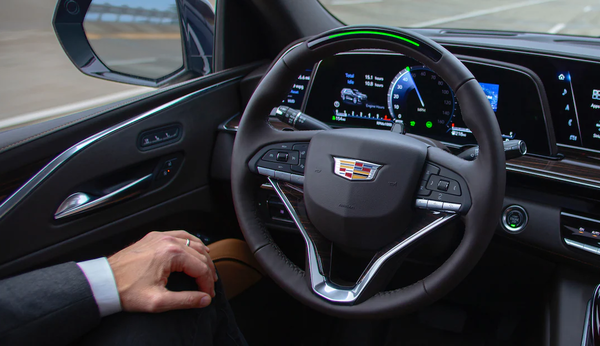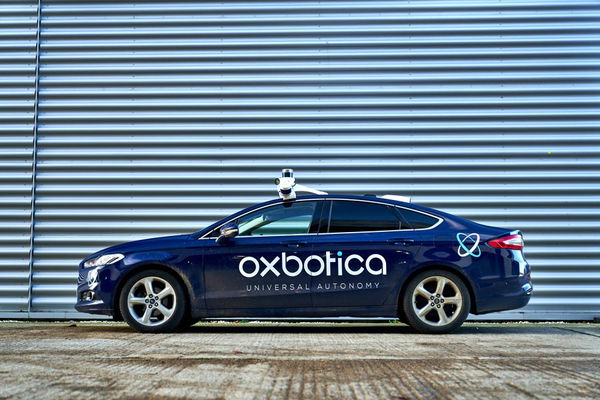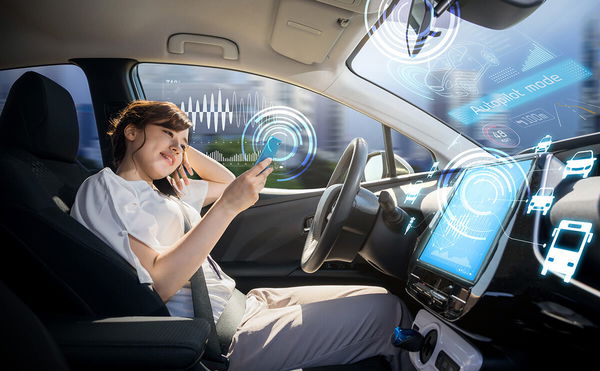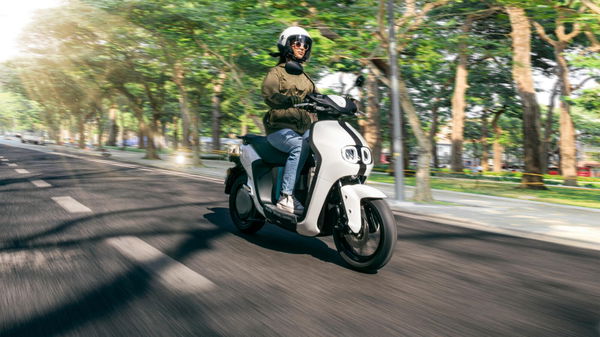Could UK roads be filled with unsupervised self-driving cars?
The UK government has announced that it is planning to introduce self-driving vehicles from next year, with full implementation planned for 2025.

Plans have been announced by the UK government that would see self-driving cars on the country’s roads from 2025.
The UK government is planning to allow fully-self-driving vehicles on the country’s roads from 2025.

As well as the 2025 date for self-driving vehicles, the government says that “Some vehicles, including cars, coaches and lorries, with self-driving features could be operating on motorways in the next year.”
This is despite car manufacturers neglecting to include technology on their semi-autonomous vehicles that prevents the computer from driving the car when there is no one behind the wheel.
An experiment by Car and Driver last year showed how easy it is to exploit autonomous technology. They brought together multiple cars with semi-autonomous capabilities and showed how they can be tricked into driving unsupervised.
Some of the vehicles have sensors on the steering wheel to make sure the driver is holding it even while the active cruise control is turned on, so that the driver can react if necessary. But, Car and Driver's test showed that in place of the driver's hands a weight can be applied to the steering wheel in their place.
Other vehicles use infrared cameras to determine whether the driver is paying attention to the road, but these were thrown off by a pair of glasses with eyeball graphics on the lenses.
Overall, Car and Driver's tests showed that semi-autonomous vehicles can be tricked into driving without human supervision. There is technology to stop this that is used on lawnmowers, and even in car passenger seats o the car knows whether to deploy the passenger airbag in a crash: simply a weight sensor in the driver's seat, as mentioned by Road and Track.
That of course could also be tricked by placing a large enough weight in the driver's seat in place of the driver itself, but even still car makers so far do not use such a sensor in their semi-autonomous vehicles in the driver's seat, and so it is possible to fool one into driving alone.

The UK government is, in any case, planning to pour £100 million into the new technology, which it anticipates will create 38,000 new jobs in a £42 billion industry.
£34 million of those £100 million have been confirmed by the government today to be directed towards research and development of safety measures around the autonomous vehicles.
Additionally, £20 million has been allocated by the government “ to help kick-start commercial self-driving services and enable businesses to grow and create jobs in the UK,” according to an article on the UK government website.
The article also says that “Successful projects could help see, for example, groceries delivered to customers by self-driving vehicles, or shuttle pods assisting passengers when moving through airports. £6 million will also be used for further market research and to support commercialisation of the technology.”
The government says that self-driving vehicles “could revolutionise public transport and passenger travel, especially for those who don’t drive.” That is somewhat concerning. You put a computer in charge of a vehicle, and seemingly that means that not a single person in that vehicle actually needs to be able to control it themselves. As we know, computers never do anything wrong, as shown by the below clip of a self-driving Tesla not doing anything wrong during a test.
New video of Master Scammer Musk's Full Self-Driving @Tesla ruthlessly mowing down a child mannequin wearing a safety vest in a real school crosswalk. No cones. Room to swerve. Video of pedals.
Everything is real except the child, bc you know what would happen to a real child! pic.twitter.com/a3ut9bpSqG— Dan O'Dowd (@RealDanODowd) August 15, 2022
The government also says that self-driving vehicles could help children get to school in the future. It does not, though, say what might happen if another child who is walking to school crossed the road in front of said self-driving vehicle.
“The benefits of self-driving vehicles have the potential to be huge,” said Transport Secretary Grant Shapps. “Not only can they improve people’s access to education and other vital services, but the industry itself can create tens of thousands of job opportunities throughout the country.
“Most importantly, they’re expected to make our roads safer by reducing the dangers of driver error in road collisions.
“We want the UK to be at the forefront of developing and using this fantastic technology, and that is why we are investing millions in vital research into safety and setting the legislation to ensure we gain the full benefits that this technology promises.”

It’s true. Self-driving vehicles could eliminate driver error-induced crashes. But, they might generate computer-induced crashes. But you cannot prosecute a computer, so in the event of a computer-induced crash you have two options: ban the computer from the roads until there is an update to its software that stops it from making the mistake that is causing it to have accidents; or allow it to continue in the unsafe condition.
That leads to further issues down the line when considering what the situation might be for autonomous vehicles that are made by manufacturers who do not operate anymore, for example. Humans can adapt to external situations, such as rule changes (for example the recent Highway Code update that means road-using vehicles have to stop for pedestrians), but even a neural network needs to be informed by human input of rule changes, or when it needs to change its behaviour.
The news of the UK government’s latest self-driving plans come after the United Nations (UN) announced in July that self-driving cars would be allowed to drive faster, but would also have to undergo more stringent tests to make sure they can detect motorcycles.

Despite the mention of many four-wheeled vehicle types, the government neglects to mention in its announcement anything about motorcycles. This should hardly come as a surprise, of course, but considering the necessity for autonomous vehicles to be able to detect motorcycles when changing lanes, for example, as well as the exploration of autonomous motorcycles by some manufacturers including Honda and Yamaha, perhaps they were worth a mention.
And, there is also the worry that the government’s enthusiasm and advocation for self-driving vehicles would sway judgements in the event of a collision with either pedestrians or human-operated vehicles.

There is also the question of what will power autonomous vehicles. Since 2035 seems to be the end date for new combustion vehicles, it would make sense that they are electric. But, powering both the electric motor and the computer to drive the car will be a significant drain on the battery.
So, perhaps the will use hydrogen fuel cells, which are very expensive, which will make self-driving public transport very expensive- which actually makes sense, because public transport in the UK is mostly unaffordable, anyway.
Ultimately, autonomous vehicles are very much a part of the future. Whether you think they will be safe or not is, firstly, irrelevant, and, secondly, mostly down to whether you deem legislators would be responsible or irresponsible in how they account for autonomous vehicles, especially in the initial crossover phase when they mix with human-driven vehicles.











